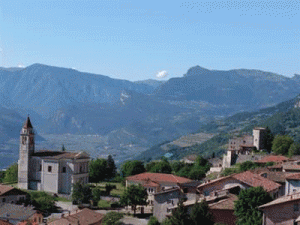Villa Lagarina, built near the ancient Pieve di Valle, on the right bank of the Adige,
is an important agricultural and industrial center. Over time it has retained its village character Trentino its sumptuous palaces, its vast parks and rich churches. Do not miss the parish church of the Assumption, one of the most important baroque monuments in Trentino; Free Palace, seat of the Diocesan Museum and Cultural Center; Camelli Palace, the Town Hall; I place in the village, the church of Saint Apollonia and the big spinning wheel and imposing appearance; Castellano, the castle, the church of San Lorenzo (XVIII). From here you reach the falls Strafalt with caves and ruins of ancient buildings, a mill and the arch of a bridge probably Roman. Upstream of Castellano, the romantic lake Cei, surrounded by forests of beech.

TERRITORY OF VILLA LAGARINA
Villa Lagarina, consisting of three fractions (I place, and Pedersano Castellano), is situated at the foot of Mount Stivo on the right side of the river Adige. The country consists of 3489 inhabitants.
HISTORY OF VILLA LAGARINA
Thanks to the excellent climatic conditions, human settlement on the territory of Villa Lagarina, left since the days of prehistory. In the first century BC, there was the Romanization of Villa Lagarina (a large part of the territory of South Tyrol Right has provided archaeological material). After feudalism and the long period between the passage and the upheaval of the French Napoleonic Villa Lagarina experienced a period of relative prosperity (1700-1800), thanks to the breeding of silkworms and the cultivation of potatoes and maize.
